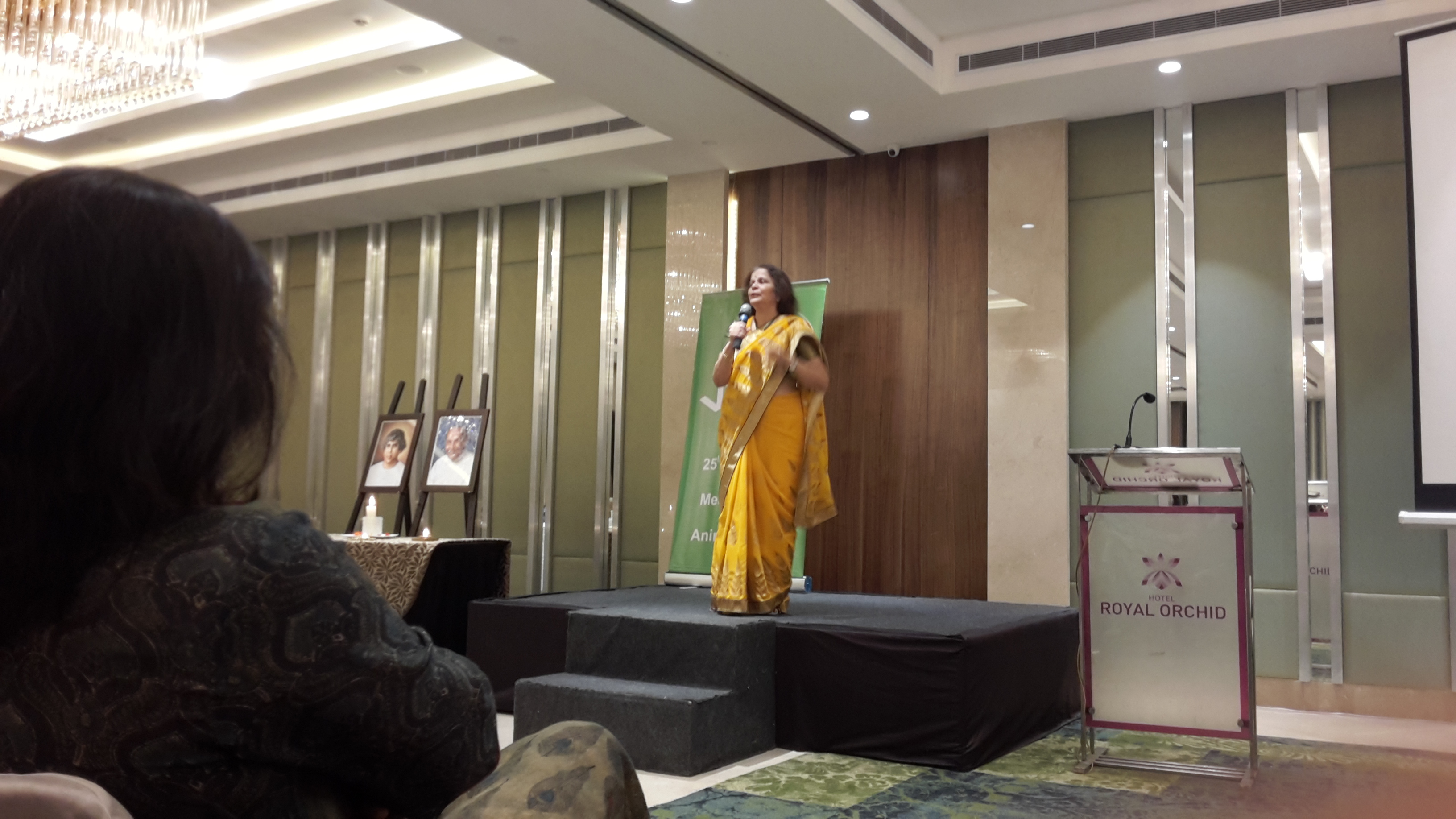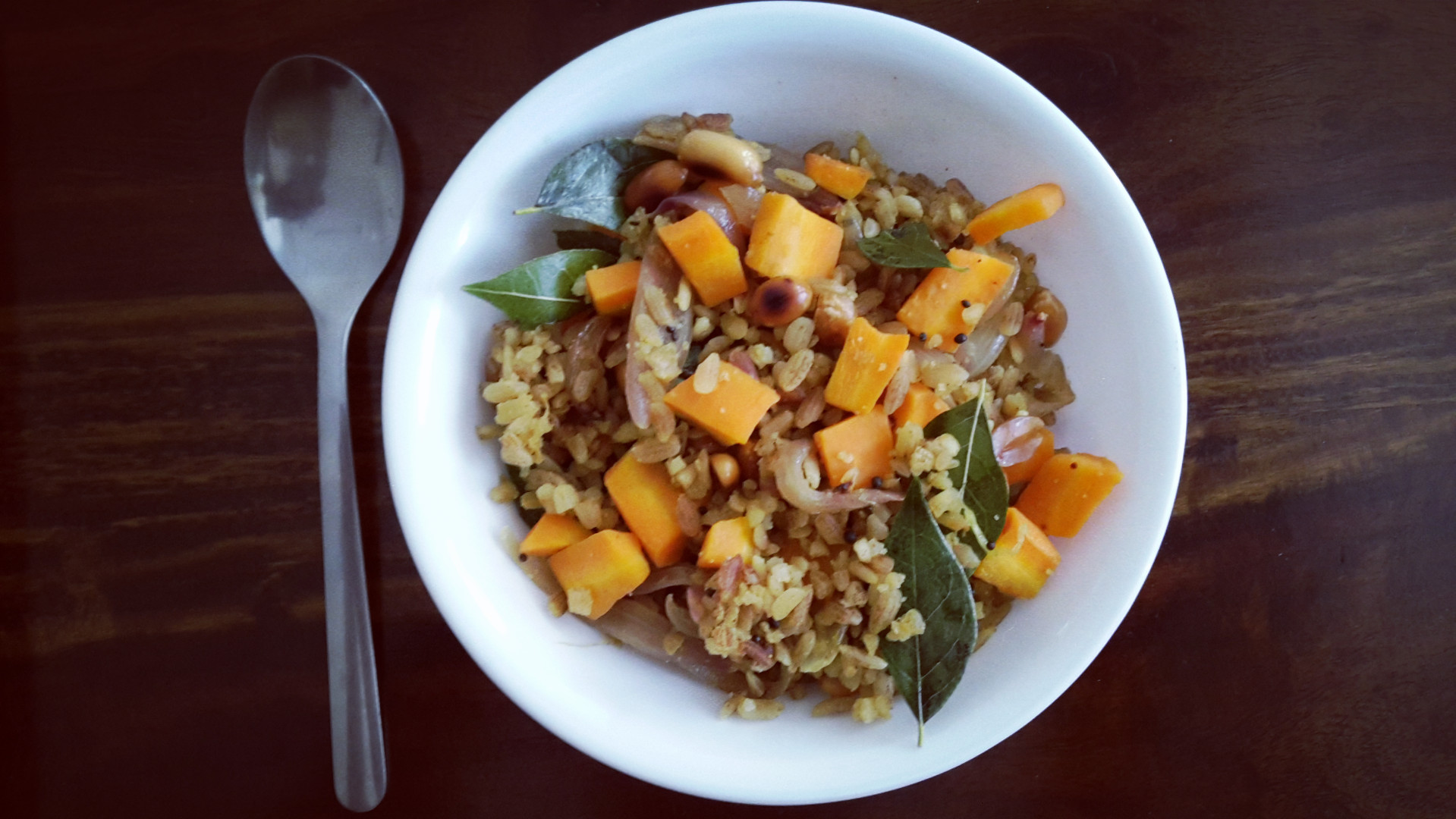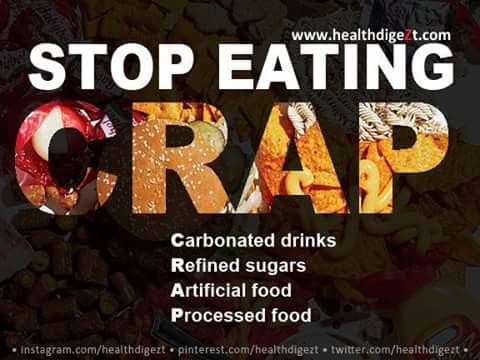
I get a lot of queries about diet and food. Since holistic health is largely about diet and exercise, I make it a point to attend as many sessions as I can to gain insight into different food trends and beliefs. Your diet, like your style of clothing, has to be something that you are comfortable with and that works for you. Food trends that may work for others may not be suitable for your body chemistry. A diet which is convenient for others may not be convenient for you at all. For this reason, I feel we should all be very mindful about our diets, and also willing to experiment. Beliefs that we’ve been holding on to for years may not hold good for us. Alternatively, things that we think are not true and ‘don’t work’ may actually show results!
Growing up around the world at a time when Indian food wasn’t easily accessible ensured that I’m a simple and unfussy eater. I did have my quirks (like all kids). For instance, for some reason I couldn’t stand tomatoes in any sabjis and dals and would always fish them out of my food! However, living all over the world ensured great gastronomical delights such as candy apples in the famous carnivals of Brazil, khubz and fasulia in the by lanes of Yemen and mishti doi in the mangroves of Bangaldesh knowns as the Shundarbans. Food is a big part of culture and to this day I enjoy sampling local flavors and cuisine.
that I’m a simple and unfussy eater. I did have my quirks (like all kids). For instance, for some reason I couldn’t stand tomatoes in any sabjis and dals and would always fish them out of my food! However, living all over the world ensured great gastronomical delights such as candy apples in the famous carnivals of Brazil, khubz and fasulia in the by lanes of Yemen and mishti doi in the mangroves of Bangaldesh knowns as the Shundarbans. Food is a big part of culture and to this day I enjoy sampling local flavors and cuisine.
Rekha Diwekar is a proponent of local food. Her talk was aptly titled ‘Delicious Yet Nutritious’. She wanted to dispel the myth that food has to be tasteless and bland in order to be nutritious. Her contention is that it is possible to remain fit and healthy by eating clean and local produce.
Below are some points from her talk:
- Your food is responsible for producing the digestive enzymes that will extract the nutrients that you body can use. The process of digestion starts from the moment
 you see and smell the food and start to salivate in anticipation of the delicious food. Tasteless food creates no enzymes and therefore digestion doesn’t happen optimally.
you see and smell the food and start to salivate in anticipation of the delicious food. Tasteless food creates no enzymes and therefore digestion doesn’t happen optimally. - The process of aging occurs when the number of cells that are regenerated and renewed in your body are less than that number of cells that die. This process starts at the age of 25. In other words, you start to age at 25.
- We eat food, food eats us too. Any food that doesn’t nourish you is eating you up from the inside.
- One of the main factors you need to keep in mind when choosing is the food miles. The more local your food, the less it has travelled with artificial preservatives to keep it fresh for longer.
- The food you choose should be traditional and seasonal.
- The best way to decided whether you should eat a particular food is to ask yourself two questions about the food: Can I eat this food repeatedly for 15 days. For instance, panipuri is tasty and it makes you salivate, but in all honesty, can you eat it for 15 days straight with the same zeal and gusto? Probably not. The next question to ask your self is whether you feel light and energetic. If you feel heavy and sleepy post lunch, it would be a good idea to analyse what you are consuming for lunch. According to Rekha Diwekar, just like some clothes look better on the mannequin, some foods look better in the shop and should stay in the shop and not in our tummies.
- Rice is a superfood. It is a popular myth that diabetics shouldn’t have rice because of the sugar content. The sugar found in rice is different from actual white sugar. Plain and simple sugars like glucose and cane sugar have a chemical formula. They go into your system and react. Rice has no chemical formula, so what happens to it once it enters your system is different from what happens when you eat sugar. Rice is an anti allergen so its great for gluten intolerant people. Also, rice contains Lysine which is the precursor to the Human Growth Hormone (HGH). The reason you start to age at 25 is because the HGH production decreases.
- Eating rice at night is a great option because rice is easily digested and you end up
 feeling light and fresh in the morning. Although rice has a high GI (glycemic index), when mixed with something (such as curd or dal) the GI becomes low and rice becomes a superfood. Single polished rice is recommended.
feeling light and fresh in the morning. Although rice has a high GI (glycemic index), when mixed with something (such as curd or dal) the GI becomes low and rice becomes a superfood. Single polished rice is recommended. - The vitamin deficiencies that have become omnipresent now can be linked to the absence of healthy fats in our current diets. Vitamins A D E and K are fat soluble. So you need good quality fats to dissolve them. Good fats are composed of SCFA – Short Chain Fatty Acids. When we sit in the sun hoping to combat our Vit D deficiency, we need to also understand that the process of conversion from D2 to D3 will only happen in the presence of good fats. Ghee is a good fat. Traditionally we make gajar ka halwa during the winters. When made with ghee, this combination contains good fats and Vit A. Also, traditionally women are asked to eat a lot of ‘fattening’ food when they are pregnant. This usually consists of ghee laden ladoos and panjiri. During pregnancy your Thyroid has to work overtime and the healthy fats from these goodies ensure that your Vit D levels stay normal.
- Another source of good fat is coconut. Coconuts contain MCFA – Medium Chain Fatty Acids and MCTs – Medium Chain Triglycerides. Both these are responsible for your physical stamina and mental peace. Coconut water helps in treating vaginal infections and muscle cramps as well.
- Many people I know (and I have to admit I’m guilty of this too) don’t have the coconut chutney with their idlis and dosas. But the combination of the idli/dosa and chutney is optimal.
- Avoid LCFA – Low Chain Fatty Acids.T hese are found in biscuits, fried street food, bakery products and cakes.
- When cooking with oil, just use the oil once. At high temperatures oil becomes rancid and not nutritious for you.
- Have local filtered oils. In the south these would include peanut and coconut oils and in the north this would be mustard oil. Seed oils are the best oils.
- When it comes to Indian food, you will get the most of the nutrients only by following combinations should be followed:
- cereal + pulses (eg. dal chawal)
- cereal + milk products (eg. kheer, curd rice)
- milk + pulses (eg. kadi chawal)
- Another food label that we should become aware of is GRAS – Generally Regarded as Safe. A lot of processed foods contain this label and it is misleading.
- The food plan for a typical day would be:
- Wake up and drink water.
- Have some fruits/dry fruits.
- Tea
- Breakfast
- Mid morning snack: Fruit/Coconut/Sherbet
- Lunch
- Mid afternoon snack: Fruit
- Another snack
- Light dinner
- Eating a food for a particular nutrient (fiber, protein etc.) is impossible. Food and our bodies have a complex chemistry and it is impossible to reduce the process of digestion and assimilation to a single nutrient found in a particular food.
- For those who are allergic to gluten, millets are a great idea. Gluten is a non nutrient, so it is OK to eliminate it from your diet. However, elimination of any food groups should only happen if you are allergic to that particular food.
- Sources of good fat: coconuts, nuts, filtered oils, and homemade butter.
- All sources of fructose have low GI. So all fruits have low GI and are easy to metabolise by your body.
- Too much fibre isn’t good for you.
- Many of us rue our hunger. However, hunger is a sign of youth. A growing body feels hungry. So revel in your hunger because it shows you that you are young and healthy.
